Creating a Compelling Customer Experience Through Automation Testing
Whether it’s to make a purchase, self-educate, or self-discovery, users will always have an underlying motivation as to why they’re navigating to your site or interacting with your business. However, no matter what the goal may be, it’s common for users to experience similar pain points or challenges while achieving their goal. Thankfully, with automation testing, you’re able to take a data-backed approach to on-site optimization for landing pages, emails, call-to-action buttons, and more so you can analyze these pain points and improve their customer experience.
By automating the testing process you can quickly and easily gain deeper insight into what potential customers are interested in with little to no extra effort on your part. Automated testing allows you to generate clear data of what your contacts want without spending countless hours administering tests, gathering data, and interpreting the results.
In this blog, we’ll explore a few common types of automation testing and how you can implement these strategies for your own business.
Types of Automation Testing
A/B Testing
According to Invesco, 60 percent of companies believe A/B testing is extremely valuable in conversion rate optimization. What’s more, A/B testing is critical to evaluate the design and effectiveness of landing pages, calls to action, email subject lines, on-site forms, and more.
To perform an A/B test, you’ll create two identical items with slight variations of the on-page elements you’d like to test. Once created, you’ll offer both versions at random to determine which variation generates the highest or most improved performance.
Here’s an example where the title and subtitle have changed, but nothing else, to determine which message resonates most with your audience.
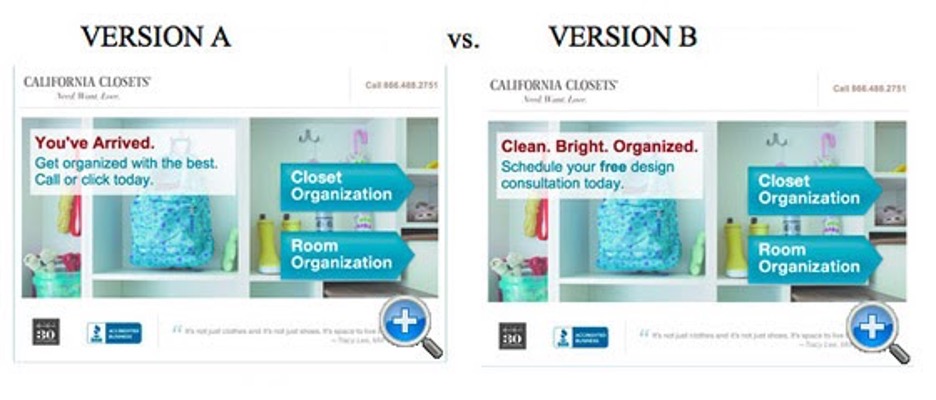
Multivariate Testing
Instead of creating two slight variations, multivariate testing allows you to test the same page by changing the elements after being arranged in a specific way for a substantial period of time. For example, the headline, color, button, and image should all be compared on the same page to see which combination is most effective.
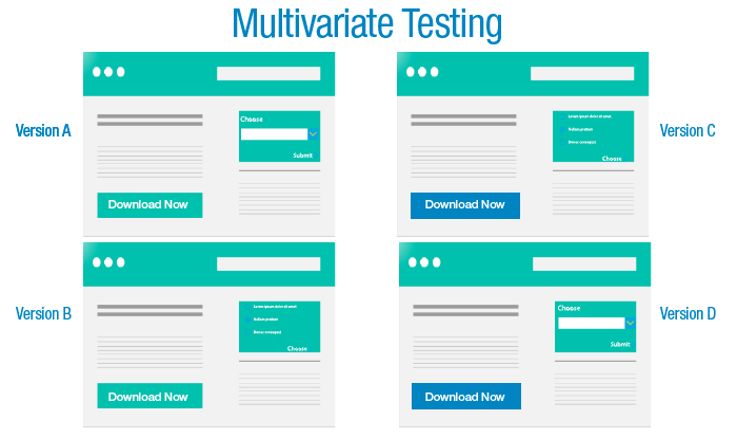
What to Test
Emails
An impactful subject line is critical to the success of any email campaign. To A/B test a subject line, try creating one variation that includes personalization or numbers, and one variation that doesn’t. With two variations, you’ll discover what elements have a higher impact on open rates than others.
Once a user clicks into an email, your email design and layout are key to securing engagement. For example, your subscribers may prefer a one-column layout to a two-column layout, or they may engage more with a specific color within that layout over another. By testing these elements, you’re able to improve engagement by tailoring your marketing creative directly to your audience.
Calls-to-Action
The call-to-action button is where all the real action takes place. Whether it’s to complete a purchase, submit a form, or download premium content, your defined CTA will determine your website’s overall conversion rate. With A/B testing, you can see what specific copy garners more conversions, what color motivates more clicks, and so on. This type of experimentation not only helps you improve your total conversion rate but what elements attract high-quality leads, to begin with.
Navigation
Another element of your website you can optimize with A/B testing is your website’s navigation. It is the most crucial element when it comes to delivering an excellent user experience. Ensure you have a clear plan for your website’s structure and how different pages will be linked to each other and react within that structure.
A website’s navigation is an important part to test because it determines where a customer will go after they enter. In the event that the navigation is difficult or confusing, the user is likely to go to a different site.
Tools to Use for A/B Testing Automation
We’ve talked about the different types of testing and some examples of what to test, but now let’s talk about how you can use tools to automate your testing so you can save time gathering data from dozens, hundreds, or thousands of users at a time, and compile data you can actually make sense of.
Most marketing tools have A/B testing built-in where you can easily duplicate a variant, change the chosen variable(s) for A/B testing, launch, and then after a set period of time, the tool automatically pulls raw event data into actionable data for your team to use for either continued testing or final optimizations.
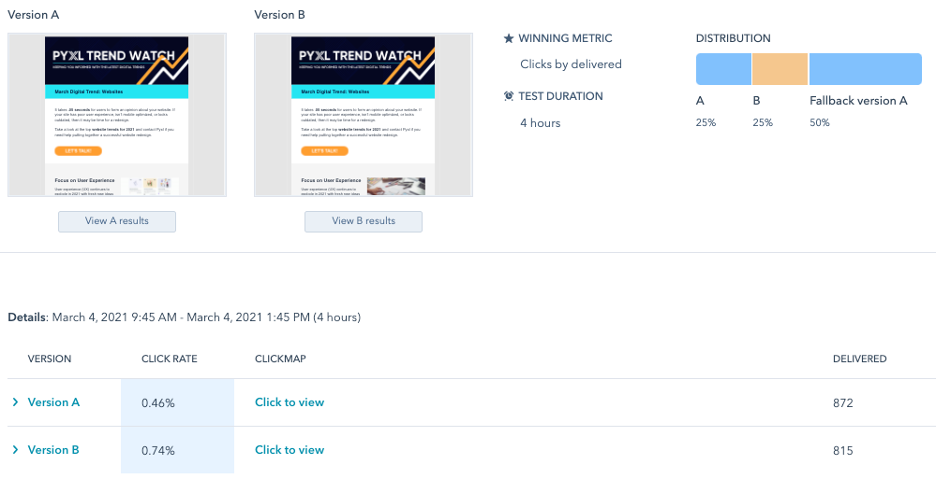
Here’s a quick guide to some of the automation testing tools we recommend depending on your business goals:
HubSpot
HubSpot allows its customers to A/B test two versions of a page at the same URL to determine which one performs better. Once the initial configuration is complete, the tests will run automatically. The results will determine which page performed best based on how many visitors visited and interacted with it throughout the testing period.
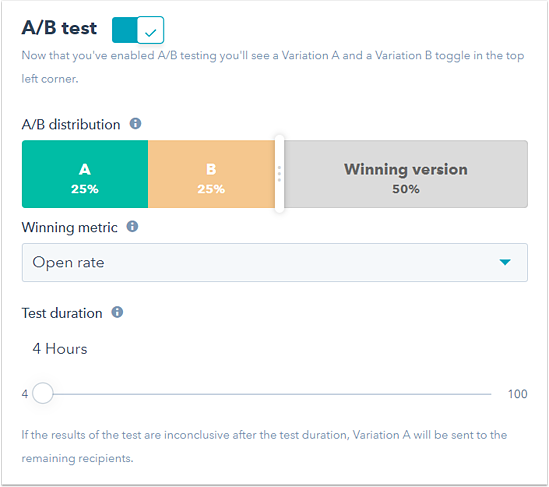
Optimizely
The Optimizely platform enables enterprises to test new products, design processes, and promote new products with automated digital experiments. With their powerful A/B and multipage experimentation tool, you can run multiple experiments at once on the same page, testing various variables of your web design simultaneously.
Additionally, Optimizely offers various experiment dimensions such as ad campaigns, geographic locations, cookies, and experiment segmentation parameters such as device, browser, and campaign.
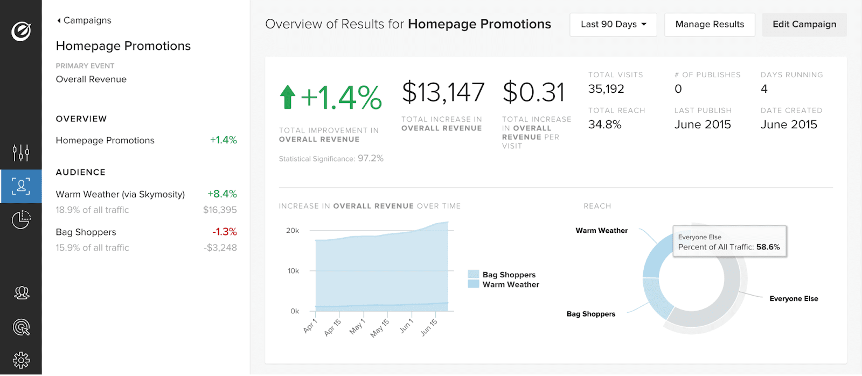
Convert
Convert uses a drag-and-drop, visual editor to easily create A/B, multivariate, multipage, and split tests. The style sheet editor in Convert can also be extended to create dynamic content for complete control over your content. What’s more, it eases the process of integrating with your CMS or e-commerce platform by integrating seamlessly with Google Analytics. With over 35 elements, it’s possible to build profiles of customers and customize them as well.

Next Steps with Pyxl
By using these common testing methods, your company is better positioned to turn leads into conversions with an improved user experience. Need some help? Contact our digital experts at Pyxl to discover how we can incorporate testing and automated testing tools into your digital strategy.
Updated: Mar 02, 2023
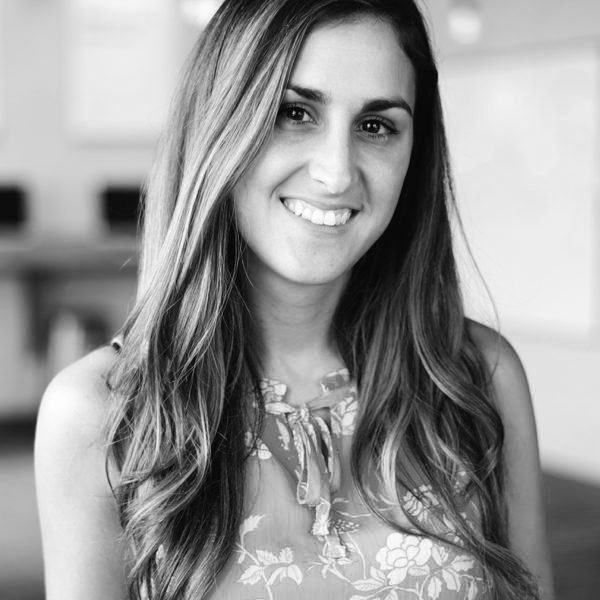 Bonnie Winter
Bonnie Winter Kati Terzinski
Kati Terzinski Erin Murray
Erin Murray